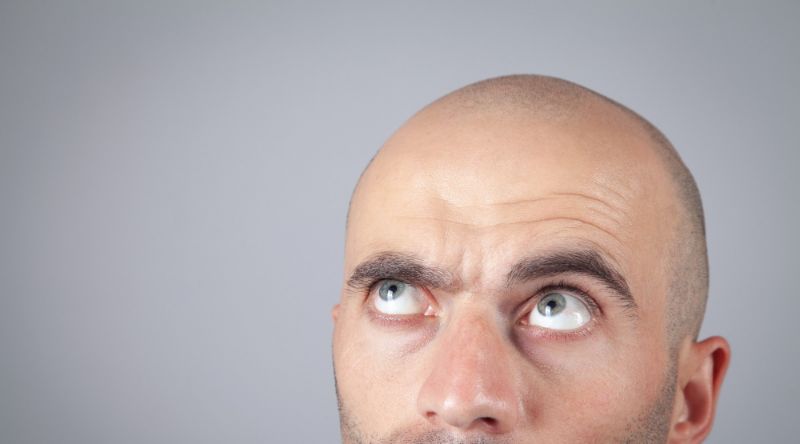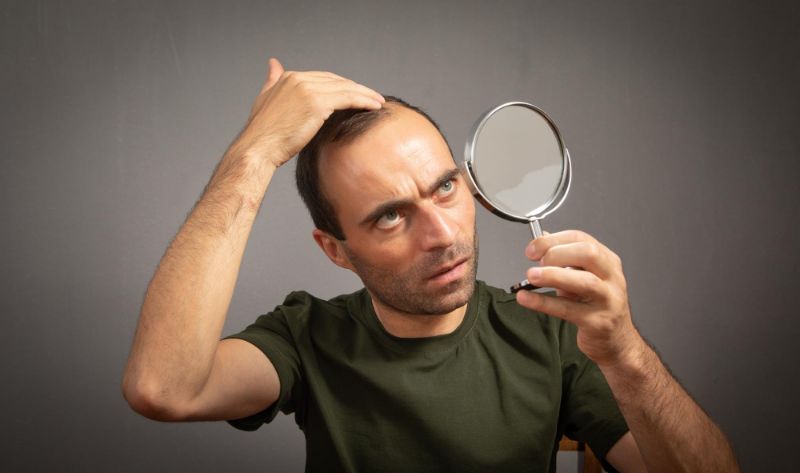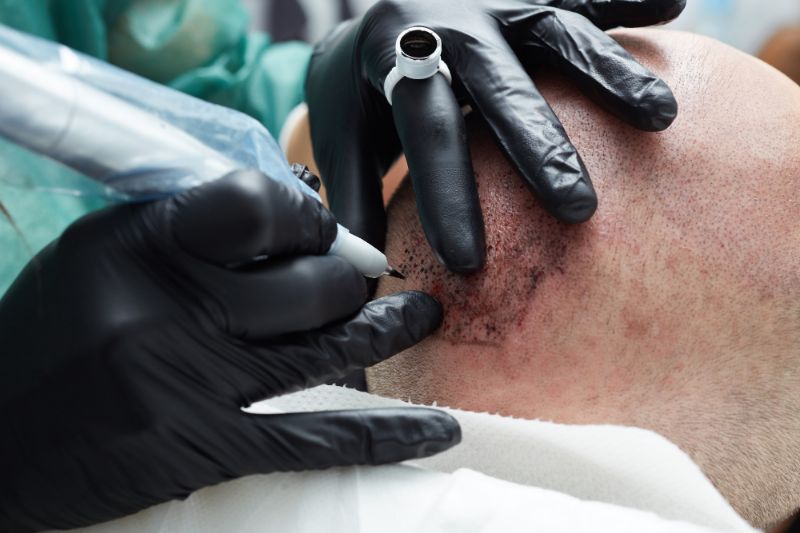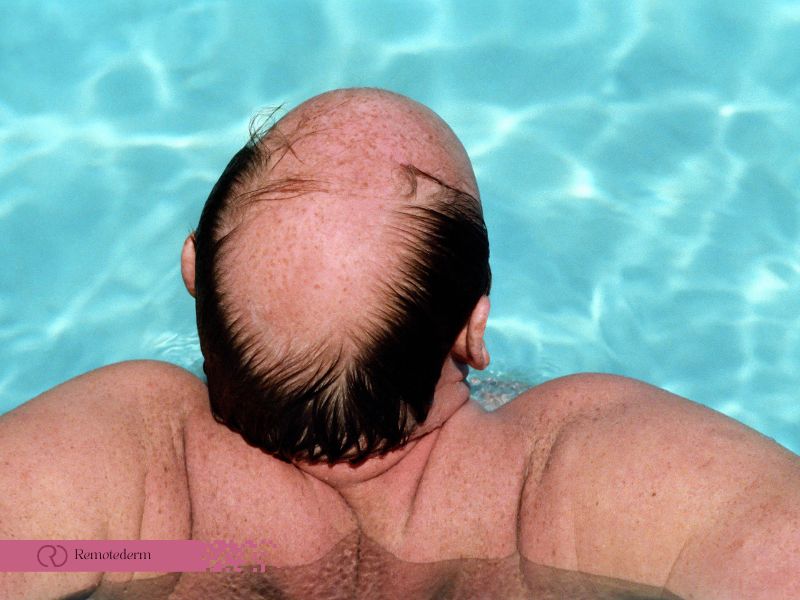Male pattern baldness affects up to 70% of men at some point in their lives, and it can begin as early as the teenage years. This type of hair loss is caused by a combination of genetic and hormonal factors and can lead to a receding hairline and thinning hair on the crown of the head. While there is no known cure for male pattern baldness, there are several treatments available that can help to slow or even reverse the process of hair loss. In this article, we’ll take a closer look at male pattern baldness, the different types, and what causes it. We’ll also explore the available treatments and weigh in on whether there is a cure for male pattern baldness or not.
Understanding Male Pattern Baldness
Male pattern baldness, also known as androgenetic alopecia, is a common condition that affects a large number of men worldwide. It is characterized by a progressive thinning of hair on the scalp, eventually leading to hair loss in specific patterns. Typically, male pattern baldness starts with a receding hairline, followed by thinning at the crown or top of the head.
If you seek further information regarding Androgenic Alopecia, we invite you to explore our comprehensive blog post dedicated to this topic.
Over time, these areas may merge, resulting in partial or complete baldness. Male pattern baldness is influenced by a combination of genetic and hormonal factors. While it primarily occurs in men, it can also affect some women. This condition can have significant emotional and psychological impacts, affecting self-esteem and confidence.
Understanding the nature of male pattern baldness can help individuals recognize its symptoms, seek appropriate treatments, and explore strategies to manage and embrace their changing appearance.

Stages of Male Pattern hair loss
Male pattern baldness can be classified into various types based on the degree of hair loss and the age at which it occurs.
Male pattern alopecia (baldness) is commonly categorized into 7 types:
- Stage I: This is the mildest form of male pattern baldness, characterized by a slight recession of the hairline at the temples.
- Stage II: In this stage, the hairline continues to recede at the temples and may form a distinct “M” shape.
- Stage III: At this stage, the hairline has receded further and there is significant thinning at the crown of the head.
- Stage IV: Hair loss is more pronounced at the crown and the hairline has receded even further.
- Stage V: The hairline has receded to the point where the bald area at the crown and temples have merged.
- Stage VI: The hair loss is now severe, with only a band of hair remaining around the back and sides of the head.
- Stage VII: This is the most advanced stage of male pattern baldness, characterized by extensive hair loss on the top and front of the head, leaving only a horseshoe-shaped band of hair around the sides and back.
It’s important to note that not all men will experience the same progression of hair loss, and some may skip certain stages entirely. By understanding the different types of male pattern baldness, men can better identify their own stage of hair loss and explore appropriate treatment options.
What causes male pattern baldness?
The exact cause of male pattern baldness is not yet fully understood, however, there are several factors that are believed to contribute to the development of this condition.
Here are some of the most common causes of male pattern baldness:
- Genetics: One of the most significant factors that contribute to male pattern baldness is genetics. If you have a family history of male pattern alopecia, you are more likely to develop this condition yourself.
- Hormones: Male pattern loss is also believed to be influenced by hormones, particularly dihydrotestosterone (DHT). DHT is a hormone that can shrink hair follicles and contribute to hair loss.
- Age: As men age, their hair may naturally become thinner and more prone to falling out. This is a normal part of the aging process and can contribute to the development of male pattern baldness.
- Medications: Some medications, such as those used to treat cancer or high blood pressure, can contribute to hair loss and the development of this disorder.
- Medical conditions: Certain medical conditions, such as thyroid problems or autoimmune disorders, can also contribute to hair loss and the development of male pattern hairloss.

While there is no guaranteed way to prevent male pattern baldness, understanding the common causes of this condition can help men take steps to minimize their risk. By working with a qualified healthcare provider and taking steps to maintain overall health and wellness, men can reduce their risk of developing male pattern baldness and promote healthy hair growth over time.
Is There a Cure for Male Pattern Alopecia?
Several treatments are available that can help to delay or even reverse the process of hair loss in men with male pattern alopecia, despite the fact that there is no known cure for the condition.
Here are some of the most common treatments for male pattern baldness:
- Minoxidil: Applied directly to the scalp, minoxidil is a topical solution. It works by increasing blood flow to the hair follicles and stimulating hair growth. While it is not a cure for male pattern baldness, it can be an effective way to slow down the rate of hair loss and promote new hair growth.
- Finasteride: Finasteride is an oral medication that works by reducing the levels of dihydrotestosterone (DHT) in the body. DHT is a hormone that can contribute to male pattern hair loss, and reducing its levels can help to slow down or even reverse hair loss.
- Hair transplant surgery: Hair transplant surgery involves transplanting hair from a donor area (usually the back of the head) to the balding area. This can be an effective way to restore a full head of hair, but it can be expensive and may require multiple sessions.
- Low-level laser therapy: Low-level laser therapy involves using a specialized device to stimulate hair growth. While the exact mechanisms behind this therapy are not yet fully understood, it has been shown to be effective in some cases.
- Scalp micropigmentation: Scalp micropigmentation is a non-invasive procedure that involves tattooing tiny dots onto the scalp to create the appearance of a shaved head or fuller hair. While it does not actually stimulate hair growth, it can be an effective way to restore the appearance of a full head of hair.

It’s important to note that not all treatments will be effective for everyone, and it may take some trial and error to find the right treatment for your individual case of male pattern baldness. Additionally, some treatments may have side effects or risks that need to be considered.
Male Pattern Baldness Conclusion
In conclusion, male pattern baldness is a common condition that affects a large percentage of men at some point in their lives. Although there is no known cure for male pattern hair loss, there are several treatments available that can help to slow or even reverse the process of hair loss. Understanding the underlying causes of male pattern alopecia (baldness), such as genetics and hormones, can help men take steps to address the issue and potentially prevent further hair loss.

One such option for addressing male pattern baldness is Remotederm’s online dermatology consultation services. With Remotederm, men can access dermatology consultations from anywhere, eliminating the need for long waits to visit dermatologists in person. This service can provide men with personalized treatment recommendations for their specific stage and type of male pattern alopcia.
FAQs
- Can male pattern baldness be prevented?
While there is no guaranteed way to prevent male pattern baldness, men can reduce their risk by working with a qualified healthcare provider and taking steps to maintain overall health and wellness.
- Can women experience male pattern hair loss?
Male pattern baldness can occur in both men and women, although it is more common in men. Women may experience a different pattern of hair loss, such as thinning hair on the top of the head or a widening part, due to hormonal changes, stress, or other factors.
- How can men address male pattern baldness?
Men can address male pattern baldness by understanding its underlying causes, taking steps to minimize their risk, and exploring appropriate treatment options, such as medications like minoxidil and finasteride, as well as hair transplant surgery.
- Is male pattern baldness a sign of a more serious health condition?
Male pattern baldness is not typically a sign of a more serious health condition, but it can be associated with certain medical conditions like thyroid problems or autoimmune disorders.
- Can male pattern baldness be reversed?
Male pattern baldness cannot be fully reversed, but there are treatments that can help slow or even stop the hair loss process.
